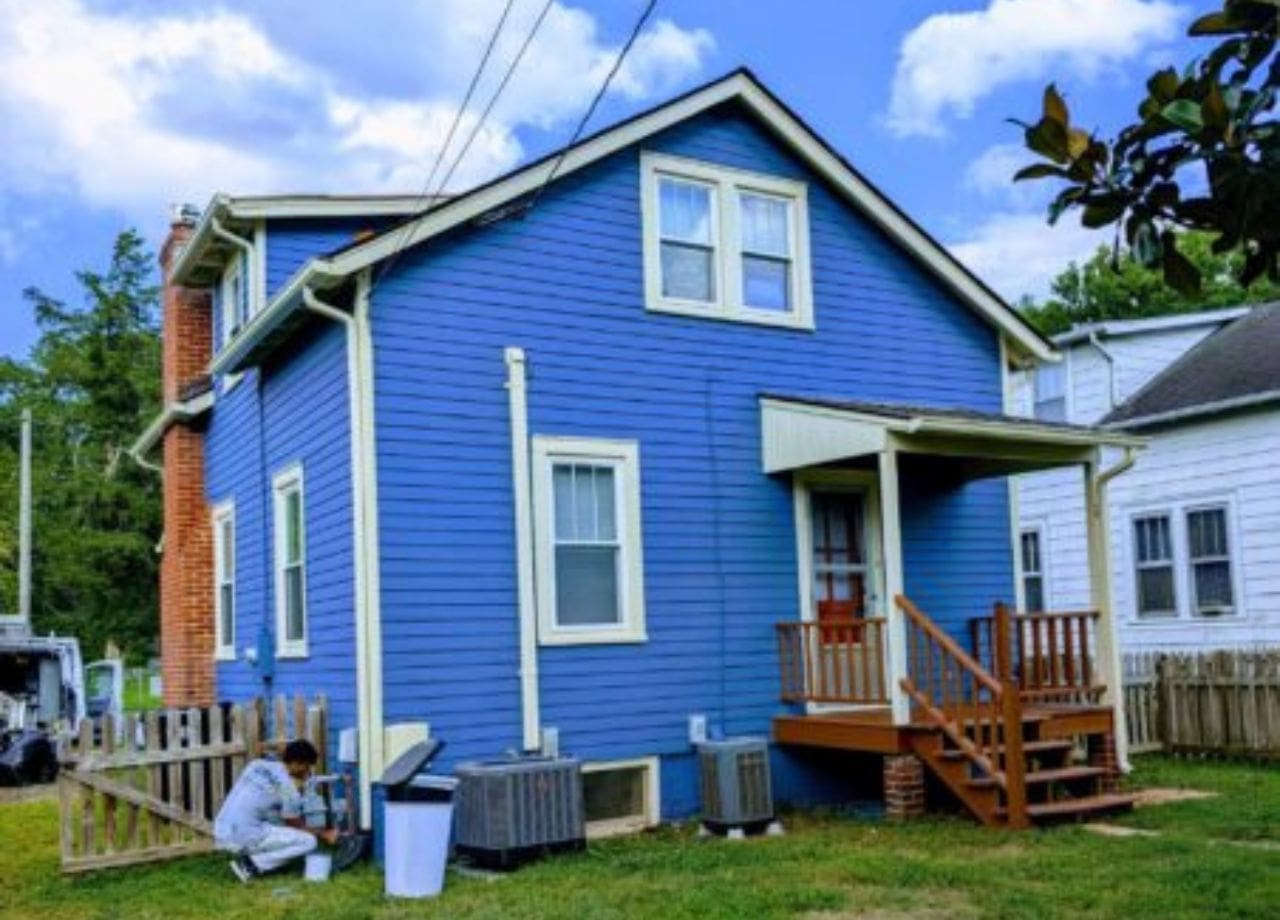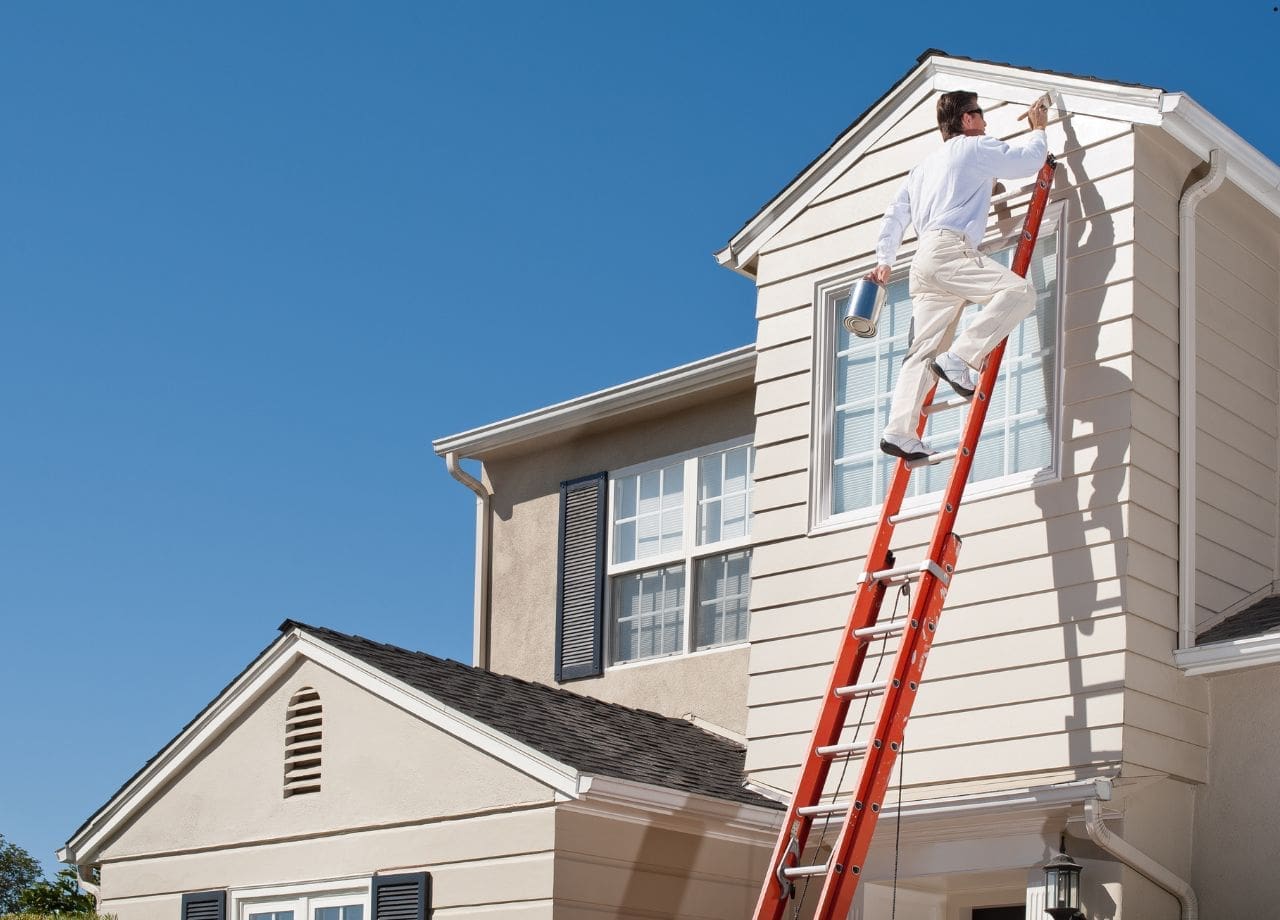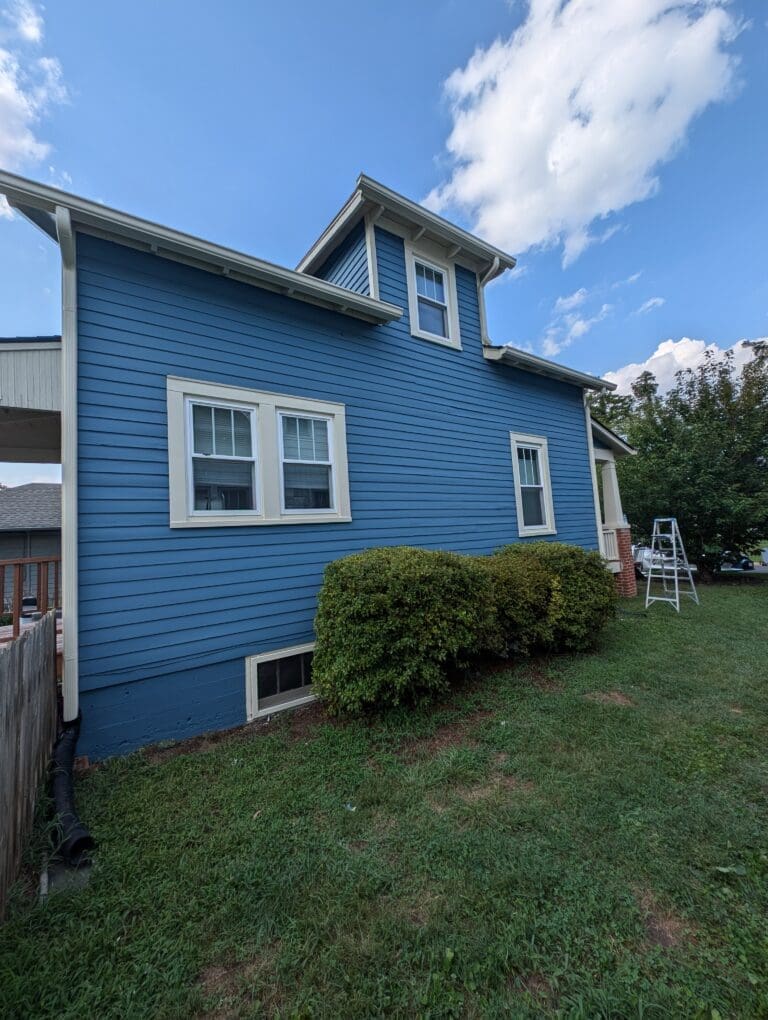Curb Appeal Boost: The Impact of Exterior House Painting
Exterior painting has a direct, measurable impact on a home’s curb appeal—and that isn’t just about visual charm. It reflects the quality of maintenance, adds to perceived property value, and shapes how neighbors, guests, and potential buyers view the home before stepping inside. The right paint job doesn’t just freshen up the siding; it commands attention, sets a tone, and can completely reset how a property is judged from the street.
At Alpha Painting, we’ve seen firsthand how a professional exterior repaint transforms homes in Fredericksburg, VA. Whether working on modern stucco surfaces or historic colonial siding, our approach isn’t just about color—it’s about making homes stand taller on their lot and feel more complete in their setting.
Table of Contents
The First Impression Starts Before the Front Door
Long before someone rings the doorbell, they’ve made judgments about the home. Faded siding, peeling trim, and discolored shutters create an impression that a property is tired or neglected—even when everything inside is immaculate. Fresh exterior paint corrects that disconnect. It communicates pride of ownership, attention to upkeep, and confidence in the home’s overall condition.
Even subtle improvements matter. Repainting eaves, window frames, and front steps can shift a home’s appearance from dated to clean and well cared for. When a prospective buyer or guest pulls into the driveway, their attention naturally lands on the front elevation. What they see there shapes everything that follows.
Paint Isn’t Just Color—It’s a Barrier
Curb appeal is about visuals, but a great paint job does more than dress up a property. Exterior paint acts as a protective shell. It helps prevent water intrusion, shields against UV damage, and discourages pest infestation. Homes in Central Virginia face intense summer sun, unpredictable weather shifts, and moisture cycles that wear on unprotected materials. When exterior paint begins to break down, so does the home’s first line of defense.
A proper painting process includes surface preparation—scraping, sanding, caulking, priming—and it’s this foundation that helps paint last. The results may look stunning, but the durability matters just as much. High-quality paint systems resist fading and peeling, meaning the curb appeal doesn’t fade within a season or two.
Color Choice Influences Perception
Color psychology plays a subtle but important role in how a home is perceived from the street. Lighter tones tend to make homes appear larger and more open. Earthy tones blend harmoniously with landscaping. Contrasting trim adds sophistication. Muted modern palettes can signal a more high-end aesthetic, while bold color accents on shutters or doors can inject personality without overwhelming.
Choosing a color isn’t about following trends blindly. It’s about reading the style of the home, considering neighboring properties, and respecting HOA requirements or historic guidelines when applicable. A well-selected scheme can elevate even modest homes into standout properties without expensive renovations.
Beyond preference, color also impacts temperature control. Lighter colors reflect heat, which can help with energy efficiency, especially on sun-exposed façades. That’s an added layer of value tied directly to paint selection.
Exterior Paint Adds to Resale Value
Real estate professionals regularly cite exterior paint as one of the highest ROI improvements a homeowner can make before selling. It’s a relatively low-cost upgrade that delivers immediate visual impact. When buyers see a freshly painted home, they mentally check off one major task from their list. It signals that the home is move-in ready, reducing hesitation and strengthening offers.
Homes with recent exterior painting often photograph better in listings. Online impressions drive showings, and showings drive offers. Neutral, welcoming tones help homes feel more universally appealing, while bold or unconventional palettes can turn off buyers. Painting helps frame the property as a good investment—maintained, stylish, and structurally cared for.

Even appraisers, while primarily focused on mechanical and structural elements, consider the condition of exterior surfaces when assessing overall property value. A clean, well-maintained exterior supports a higher valuation and speeds up the sales process.
Maintenance or Makeover: Both Benefit from Paint
Not every exterior painting project is about reinventing the look of a home. Sometimes, it’s about upkeep. Routine maintenance painting extends the life of siding, fascia, and trim. Wood, especially, needs reliable coatings to prevent rot. Stucco benefits from elastomeric paints that bridge hairline cracks and resist moisture. Vinyl and aluminum siding, too, benefit from coatings designed for flexibility and UV resistance.
Other times, the goal is transformation. Homeowners might want to break free from outdated color choices made a decade or two ago. A new coat of paint can modernize a home without costly structural changes. Even dated architectural elements can look revitalized with the right finish and color coordination.
Homes with painted brick offer an even more dramatic change. When done properly with breathable masonry coatings, painting brick can make a home feel newer and brighter while still respecting its architectural bones.
Trim, Doors, and Details Matter
Curb appeal lives in the details. Even when the body of a house looks solid, worn trim, chipped doors, or faded garage accents can pull the whole look down. Exterior painting should address more than the siding. Repainting soffits, fascia boards, gutters, shutters, porch railings, and doors ensures a consistent finish across the entire exterior.
Front doors especially deserve focused attention. They’re often a focal point from the street and provide a strong opportunity to add contrast or character. A sharp, glossy finish on the door with complementary trim instantly signals care and adds depth to the overall presentation.
Garage doors and entry steps also play into the first impression. Matching or coordinating these with the overall scheme ties everything together. This cohesive feel helps even older homes present as updated and thoughtfully designed.
Professional Application vs. DIY
Plenty of homeowners attempt to tackle exterior painting on their own, but the results are rarely equal to professional work. Climbing ladders, managing uneven surfaces, applying multiple coats, and handling prep work with the right tools require skill and experience. Mistakes in outdoor painting are not just cosmetic—they can lead to premature paint failure and costly repairs.
Professionals follow systems that maximize adhesion, durability, and coverage. From power washing to back-rolling, every step has a purpose. They also know how to navigate challenges like weather shifts, surface degradation, lead-safe work practices on older homes, and product compatibility. All of this translates to a finish that holds up better and supports curb appeal for years, not months.
Neighborhood Standards and HOA Considerations
In many communities, especially those with active HOAs or architectural guidelines, curb appeal isn’t just personal—it’s regulated. That doesn’t mean creativity is off-limits, but it does mean that paint colors, sheen levels, and exterior finishes often need approval. Failing to follow these guidelines can result in fines or forced repainting.
Professional painters familiar with local requirements can help homeowners navigate these rules smoothly. Matching approved palettes, sourcing historical references when needed, and offering mock-ups or samples all help ensure that the finished result doesn’t just look good—it checks every box for compliance.
In historic districts or older neighborhoods in Fredericksburg, it’s especially important to honor architectural intent while updating appearances. The right exterior paint can preserve character while still delivering a refreshed look.
Timing Makes a Difference
Exterior painting isn’t a year-round job in every climate. In Virginia, the painting season typically runs from spring through early fall, when temperatures allow for proper paint curing. Cold snaps, excessive humidity, and afternoon thunderstorms can disrupt schedules or affect finish quality if not managed properly.
Planning ahead matters. Booking a professional team in early spring ensures access to ideal weather windows and avoids the scheduling bottlenecks that often happen during peak months. It’s also easier to coordinate painting with other outdoor projects—landscaping, roofing, window replacements—when there’s a clear timeline.
Curb Appeal is More Than Just Paint—But Paint Sets the Tone
Paint doesn’t exist in isolation. It’s part of a larger exterior composition that includes lighting, landscaping, architectural details, and hardscaping. But paint sets the tone. It’s the canvas that everything else builds upon. A new coat can make a walkway feel more inviting, a flower bed look more vibrant, and an outdoor space feel more unified.
When homes look great from the curb, they tend to get more attention, sell faster, and create stronger emotional connections. Exterior paint is one of the most affordable and high-impact ways to make that happen.
For homeowners thinking about improving property value, refreshing the look of their home, or just taking better care of their investment, exterior painting delivers on all fronts—and its impact starts with the very first glance from the street.




